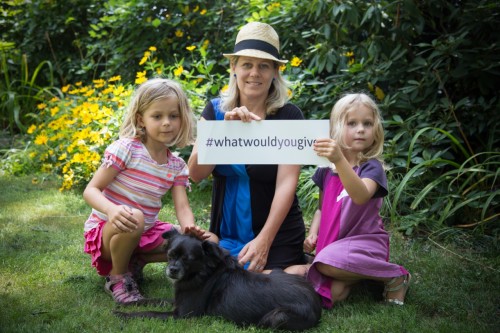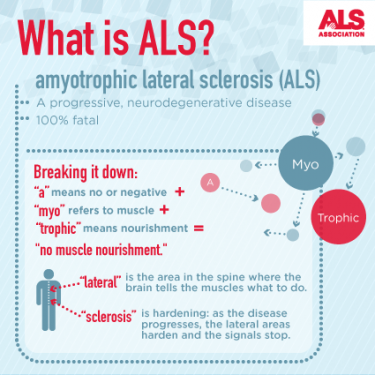
Last fall when I heard about the Ice Bucket Challenge I claimed to have felt bullied into donating since I didn’t want to make a spectacle of myself on Facebook. (OK, I was too lazy.) So while I was one of the two(?) grumbling Ice Bucket Scrooges we donated money without really knowing why or the specifics of the cause. Later that fall a New York Times article popped up on my Facebook feed. It was written by a young mom and writer who had ALS. Without the Ice Bucket Challenge putting ALS on my radar I would’ve skimmed right over it.
Sarah is smart, funny, quick to laugh at her own expense, stylish and pretty. She and I have daughters close to 5 (well, hers is 5 and mine will be soon.) Her experience of motherhood combined with her progressively terminal disease made me curious. I started reading her blog. Slowly I started understanding what the excitement was over the Ice Bucket Challenge – how huge attention and funds were finally being directed at one of the most devastating terminal illnesses around.
In a nutshell:
1. ALS (amyotrophic lateral sclerosis: a- means “no”, myo refers to “muscle”, and trophy means “nourishment.” The sclerosis part refers to the hardening or scarring. ALS occurs when the neurons connecting muscles to the brain degenerate. When the neurons die, the muscles don’t receive messages from the brain thereby atrophying. The muscles controlling motor movement are the ones affected. The ones that control walking, cooking, chewing, holding a cup of coffee, picking up a child, bathing, brushing one’s hair. ALS slowly paralyzes a person until they can no longer breath independently. It is a real life horror story.

2. There is no known cause and no cure. The only treatment is a drug which can extend survival by about 10% if taken early enough. It can cost hundreds of dollars a month WITH insurance and can give some people miserable side effects.
3. Most people with ALS die within 2-5 years of first symptoms.
4. ALS is sometimes called “The Bankruptcy Disease” due to the incredible costs involved in caring for a pALS (person with ALS). Not only does the equipment needed cost a lot (walker, support braces for ankles, power wheelchair, Hoyer lift, bed rails, bidet, home renovations to allow the wheelchair to pass through doorways etc.) but caregivers are not always covered by insurance. If the pALS has to stop working that income is lost too. It can cost around $200,000./year to care for someone with ALS.
5. ALS is not incurable. It’s underfunded. Because it is a rare disease it is grouped with other orphan diseases that generate little to no interest with pharmaceutical companies. Few patients = no profit.
6. pALS can’t advocate for themselves for long due to the loss of motor function. Their families can’t either due to taking care of their pALS. Imagine caring for someone who can’t scratch their own itch and needs help changing positions in bed, eating, getting bathed & dressed, putting makeup on etc. If there are children, add that to the regular chaos of caring for them. Some do all this while working full time. pALS need currently healthy people who are unaffected to advocate on their behalf (behalfs?) That’s where I come in.
7. ALS usually strikes people after age 50 but in Sarah’s case she was diagnosed at 33 with her symptoms starting earlier. Her daughter wasn’t even 2 years old. It can affect any of us.
In June Sarah started her #whatwouldyougive? campaign to see what people would give up to end ALS. Participants started giving up their voices, use of a hand or arm, one of her friends will use a wheelchair to take the BART to work. He’s started his own blog about it- the planning and challenges involved. All proceeds of her fundraiser go to ALS Therapy Development Institute, a non-profit biotech company devoted only to finding treatments for ALS.
As my part of the #whatwouldyougive fundraiser, yesterday I gave up the use of my voice for the day. Many friends, family members and even some people I don’t see much donated money to the fundraiser. Thank you!! We have gathered over $800 and still have another week left.
Stay tuned for my post on how yesterday went. Though it wasn’t a fraction of what an ALS patient goes through, it was eye-opening.
Sarah Coglianese’s #Whatwouldyougive? Fundraiser